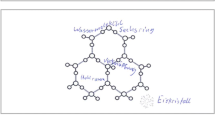Abstract
This study investigates the structuring and sequencing of a special type of verbal-pictorial learning material, namely “explanative illustrations” (Mayer, 1993). In such illustrations verbal and pictorial parts form an integrated whole with text embedded in the pictures and vice versa. Due to their complexity such instructing illustrations impose high demands on information processing. From the viewpoint of instruction one may ask how the reception of such explanative illustrations may be supported by an appropriate structure and sequence of the content.
In two empirical investigations three types of content structures and sequences were compared to each other: (1) a top-down sequence (based on assumptions of the “Elaboration Theory”, Reigeluth, 1987b) from the whole to details which shows how details are embedded within the larger context), (2) a bottom-up sequence from details to the whole, (3) the presentation as a whole (as in print).
In the first investigation the time for information processing was determined by the experimenter whereas in the second investigation the learners themselves could decide on their learning time.
The results show stable learner preferences for the top-down sequencing but different learning results in both studies. The crucial variable explaining for the differences in learning results was the learning time and not the type of sequencing. However, the learning time is not independent from a certain type of sequencing. Only with the top-down sequence (1) learners took sufficient time for information processing.
Résumé
Cette étude porte sur la structuration et la séquentialisation d’un type particulier de matériel d’apprentissage visuo-verbal, le programme “Illustrations that instruct” (Mayer, 1993). Dans ces illustrations les parties texte et graphiques forment un tout, les deux étant étroitement intégrées. Du fait de leur complexité, ces illustrations pour apprendre sollicitent un haut degré de traitement de l’information. On peut se demander comment le traitement de ces informations peut être facilité par la structuration et la planification des contenus abordés.
Dans deux recherches empiriques, le matériel d’apprentissage comportait trois types d’illustrations explicatives correspondant à trois organisations différentes de structure et séquence des contenus:
-
— un type de séquence descendante (fondée sur les principes de la “Théorie de l’élaboration” (Reigeluth, 1987b) allant du général au particulier, montrant comment les éléments de détail sont emboîtés dans le contexte plus large,
-
— un type de séquence ascendante, allant des détails au plus général,
-
— une présentation d’ensemble.
Dans la première recherche, le temps de traitement de l’information était déterminé par l’expérimentateur, alors que dans la deuxième les apprenants décidaient eux-mêmes de la durée de leur apprentissage.
Les résultats montrent que les apprenants préfèrent la présentation descendante, mais les deux études ne conduisent pas aux mêmes effets de l’apprentissage. La principale variable responsable des différences d’apprentissage est le temps d’apprentissage et non le type de présentation séquentielle. Cependant, le temps d’apprentissage n’est pas indépendant du type de séquence. Les apprenants n’ont pris un temps de traitement de l’information suffisant que dans la présentation descendante.
Similar content being viewed by others
References
Abed, F. (1989). What training instructions should know about visual design.Educational Technology, 29(6), 27–31.
Ausubel, D.P. (1968).Educational Psychology: A cognitive view. New York: Holt, Rinehart & Winston.
Ballstaedt, S.-P. (1990). Integrative Verarbeitung bei audiovisuellen Medien. In K. Böhme-Dürr, J. Emig, & N.M. Seel (Eds.),Wissensveränderung durch Medien (pp. 185–196). München: Saur.
Boemak, N., & Ohler, P. (1986). Zum Einfluß des Bildes auf die Rekognition verbalsprachlicher Nachrichtentexte.Zeitschrift für experimentelle und angewandte Psychologie, 33, 530–541.
Bruner, J.S. (1960).The process of education. New York: Random House.
Gagné, R.M. (1985).The conditions of learning and the theory of instruction. New York: Holt, Rinehart & Winston, 4th Ed.
Knieper, T. (1995).Infographiken: Das visuelle Informationspotential der Tageszeitung. München: Reinhard Fischer.
Lewalter, D. (1997).Lernen mit Bildern und Animationen. Münster: Waxmann.
Mayer, R.E. (1993). Illustrations that instruct. In R. Glaser (Ed.),Advances in Instructional Psychology (vol. 4, pp. 253–284). Hillsdale: Lawrence Erlbaum.
Mayring, P. (1983).Qualitative Inhaltsanalyse. Grundlagen und Techniken. Weinheim: Beltz.
Park, O. (1994). Dynamic visual displays in media-based instruction.Educational Technology, 34, 21–15.
Petterson, R. (1994). Visual Literacy und Infologie. In B. Weidenmann (Ed.),Wissenserwerb mit Bildern (pp. 215–235). Bern: Hans Huber.
Reed, S.K. (1985). Effect of computer graphics on improving estimates to algebra word problems.Journal of Educational Psychology, 77, 285–298.
Reigeluth, C.M. (1983).Instructional-design theories and models. An overview of their current status. Hillsdale: Lawrence Erlbaum.
Reigeluth, C.M. (1987a).Instructional theories in action. Hillsdale: Lawrence Erlbaum.
Reigeluth, C.M. (1987b). Lesson blueprints based on the Elaboration Theory of instruction. In C.M. Reigeluth (Ed.),Instructional theories in action (pp. 245–288). Hillsdale: Lawrence Erlbaum.
Reigeluth, C.M., & Stein, F.S. (1983). The Elaboration Theory of instruction. In C.M. Reigeluth (Ed.),Instructional-design theories and models. An overview of their current status (pp. 335–381). Hillsdale: Lawrence Erlbaum.
Renckstorf, K. (1976). Zur Wirkung unterschiedlicher Darstellungsformen in Fernsehnachrichten.Rundfunk und Fernsehen, 24, 379–385.
Rieber, L.P. (1989). Animation in computer-based instruction.Educational Technology Research and Development, 38, 77–86.
Salomon, G. (1983). The differential investment of mental effort in learning from different sources.Educational Psychologist, 18, 42–50.
Sarris, V. (1990).Methodologische Grundlagen der Experimentalpsychologie. Band 1: Erkenntnisgewinnung und Methodik. München: Reinhardt.
Schnotz, W. (1994).Aufbau von Wissensstrukturen. Weinheim: Psychologie Verlags Union.
Sweller, J. (1988). Cognitive load during problem solving: Effects on learning.Cognitive Science, 12, 257–285.
Weidenmann, B. (1988).Psychische Prozesse beim Verstehen von Bildern. Bern: Hans Huber.
Weidenmann, B. (1994). Informierende Bilder. In B. Weidenmann (Ed.),Wissenserwerb mit Bildern (pp. 9–58). Bern: Hans Huber.
Weidenmann, B. (1995). Abbilder in Multimedia-Anwendungen. In L.J. Issing & P. Klimsa (Eds.),Information und Lernen mit Multimedia (pp. 107–121). Weinheim: Psychologie Verlags Union.
Winterhoff-Spurk, P. (1990). Wissensvermittlung durch Nachrichten. In K. Böhme-Dürr, J. Emig, & N.M. Seel (Eds.),Wissensveränderung durch Medien (pp. 173–184). München: Saur.
Author information
Authors and Affiliations
Corresponding author
Additional information
This study was financially supported by the Deutsche Forschungs-Gemeinschaft.
Rights and permissions
About this article
Cite this article
Weidenmann, B., Paechter, M. & Hartmannsgruber, K. Structuring and sequencing of complex text-picture combinations. Eur J Psychol Educ 14, 185–202 (1999). https://doi.org/10.1007/BF03172965
Received:
Issue Date:
DOI: https://doi.org/10.1007/BF03172965




